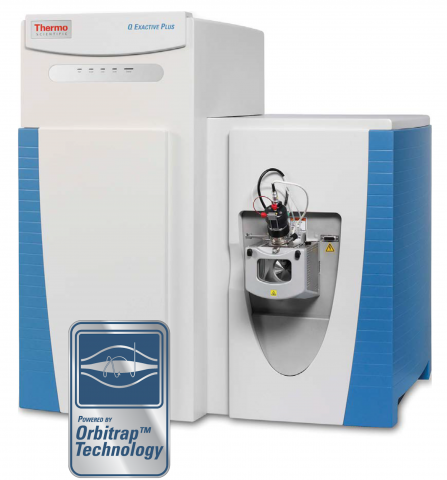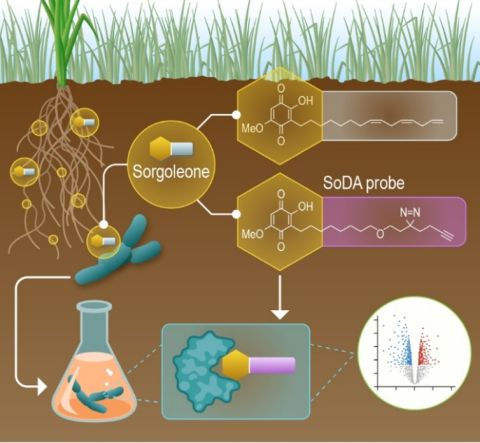Understanding molecular-scale factors governing the precipitation of aluminum hydroxides, such as gibbsite, under alkaline conditions is important for the formation of laterite deposits, as well as aluminum processing. However, mechanisms enabling tetrahedral aluminate ions to assemble into...
Filter results
Content type
Tags
- (-) Proteomics (8)
- Virology (79)
- Immune Response (53)
- Time Sampled Measurement Datasets (50)
- Gene expression profile data (47)
- Differential Expression Analysis (46)
- Homo sapiens (34)
- Mass spectrometry data (31)
- Multi-Omics (30)
- Viruses (26)
- Omics (25)
- Health (23)
- Virus (23)
- Soil Microbiology (21)
- MERS-CoV (18)
- Mus musculus (18)
- Mass Spectrometry (14)
- Synthetic (14)
- sequencing (13)
- West Nile virus (13)
- Genomics (12)
- Ebola (11)
- Influenza A (11)
- PerCon SFA (10)
- High Throughput Sequencing (9)
- Metagenomics (9)
- Resource Metadata (9)
- Microbiome (8)
- Machine Learning (7)
- Microarray (7)
To better understand the effects of solution chemistry on particle aggregation in the complex legacy tank wastes at the Hanford (WA) and Savannah River (SC) sites, we have performed a series of tumbler small- and ultra-small-angle neutron scattering experiments on 20 wt % solid slurries of...
Understanding the structure and composition of aluminate complexes in extremely alkaline systems such as Bayer liquors has received enormous attention due to their fundamental and industrial importance. However, obtaining direct molecular information of the underlying ion–ion interactions using...
Electrolyte solutions in alkaline nuclear waste contain aluminate, hydroxide, nitrate and nitrite with sodium as the predominant counterion. The salts of these ions are highly soluble, so the liquids are highly concentrated. This study found that there is a substantial incompatibility between the...
The molecular speciation of aluminum (Al3+) in alkaline solutions is fundamental to its precipitation chemistry within a number of industrial applications that include ore refinement and industrial processing of Al wastes. Under these conditions, Al3+ is predominantly Al(OH)4–, while at high [Al3+]...
X-ray, energetic photon, and electron irradiation can ionize and electronically excite target atoms and molecules. These excitations undergo complicated relaxation and energy-transfer processes that ultimately determine the manifold system responses to the deposited excess energy. In weakly bound...
In highly alkaline “water-in-salt” Na2O/Al2O3/H2O solutions where the monomeric Al(OH)4– anion dominates, isolation of transitional species that seed crystallization of sodium aluminate salt hydrates has been challenging. For example, discrimination of dimeric [for example, Al2O(OH)62–] species via...
Datasets
1
Biography Ernesto Nakayasu is a senior research scientist focused on understanding molecular mechanisms of diseases. Nakayasu has been applying systems biology and mass spectrometry-based omics measurements to study how pathogens and metabolic alterations cause human diseases; the goal is to...
Category
PerCon SFA, Co-Investigator Vivian Lin earned her PhD in organic chemistry from the University of California, Berkeley with Professor Chris Chang, developing fluorescent probes for imaging redox active small molecules. Afterward, she traveled to Switzerland for a postdoctoral fellowship in the...
Category
Last updated on 2024-03-03T02:26:52+00:00 by LN Anderson The Thermo Scientific™ Q Exactive™ Plus Mass Spectrometer benchtop LC-MS/MS system combines quadruple precursor ion selection with high-resolution, accurate-mass (HRAM) Orbitrap detection to deliver exceptional performance and versatility...
Last updated on 2024-03-03T02:26:52+00:00 by LN Anderson The Thermo Scientific™ Velos Pro™ Orbitrap Mass Spectrometer instrument data source combines advanced mass accuracy with an ultra-high resolution Orbitrap mass analyzer for increased sensitivity, enabling molecular weight determination for...
Bruker Daltonics SolariX Magnetic Resonance Mass Spectrometry (MRMS) instruments are available for different magnetic field strengths of 7T, 12T and 15T. The SolariX XR and 2xR instruments use magnetron control technology and a newly developed, high sensitivity, low noise preamplifier to exploit...
Category
Biomedical Resilience & Readiness in Adverse Operating Environments (BRAVE) Project: Exhaled Breath Condensate (EBC) TMT Proteomic Transformation Data Exhaled breath condensate (EBC) represents a low-cost and non-invasive means of examining respiratory health. EBC has been used to discover and...
Last updated on 2024-04-19T19:12:08+00:00 by LN Anderson PerCon SFA: Profiling sorghum-microbe interactions with a specialized photoaffinity probe identifies key sorgoleone binders in Acinetobacter pitti Mass spectrometry-based global proteome analysis and SoDA-PAL photoaffinity probe labeled...







